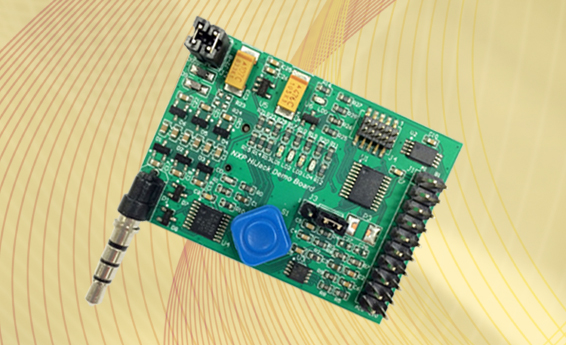Making smartphones smarter: hijack adopted for use in commercial product

 Enlarge
Enlarge
HiJack, the hardware/software platform for use in creating cubic-inch sensor peripherals for smartphones, has been adopted for use in a commercial product offering by NXP Semiconductors. HiJack was developed at the University of Michigan under the direction of Prof. Prabal Dutta, and is a novel interface that allows for the integration of sensors to a smartphone through the phone’s audio jack, making it a universal, low cost interface across phone types. HiJack harvests power from the phone and passes data through the audio jack.
According to NXP, their Smartphone Quick-Jack Solution “gives mobile, consumer and industrial product designers simple, plug-and-go connectivity for adding features to a variety of applications, from wearable medical and fitness devices, gaming controllers, and toys, to diagnostics and maintenance tools.”
What seemed like an academic curiosity just a few years ago – whether it was possible to draw enough power from the headset port to power a microcontroller and communicate bidirectionally with it – is now key to a growing set of research projects and commercial products. HiJack demonstrated that it was indeed possible to use the headset port for power transfer and data communications.
HiJack has existed as an open-source platform since its development four years ago. Since then, hundreds of projects across six continents have used the HiJack development kit, and HiJack’s basic principles have been used in several research projects and commercial products. NXP’s Quick-Jack brings HiJack to the LPC800 series of ARM Cortex-M0+ MCUs, adding to existing support for HiJack on the TI MSP430 MCU and Energy Micro’s EFM32 MCU.
“We initially designed HiJack to create a universal way to connect low-cost sensor devices easily and securely to any brand of smartphone, tablet, or even PC,” said Prof. Dutta. “Today, the applications for audio jack connectivity have exploded, from our original vision of low-cost measurement instruments, to mobile entertainment, secure card readers, remote controls, personal medical monitors and many more.”
NXP will be marketing the Quick-Jack Solution to end-product designers who are expected to integrate a variety of sensors and peripherals with a smartphone’s overall capability for wireless connectivity and cloud computing. “Smartphone user interfaces and connectivity features have revolutionized personal communication. The new Smartphone Quick-Jack Solution makes it exceptionally easy to take advantage of those same appealing features when designing end products, from something as sophisticated as a portable air-quality monitor, to something as rewarding as a child’s toy with changeable/uploadable features,” said Jim Trent, vice president and general manager, business line microcontrollers, NXP Semiconductors.
Related Links:
NXP press release: NXP Unveils Smartphone Quick-Jack Solution Transforming Audio Jack into Multi-Purpose, Self-Powered Data Port
U-M project page: Project HiJack
Technical paper (pdf): Hijacking Power and Bandwidth from the Mobile Phone’s Audio Interface

 MENU
MENU 
